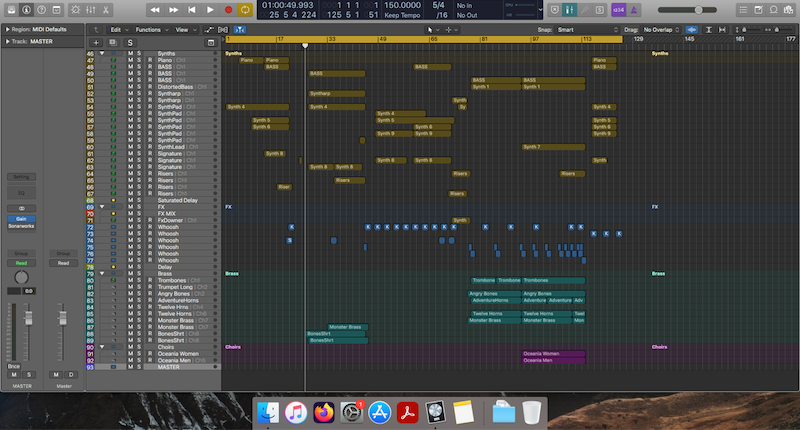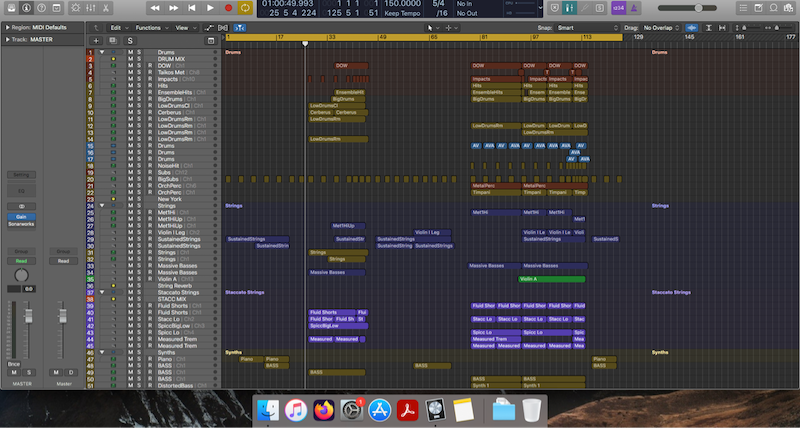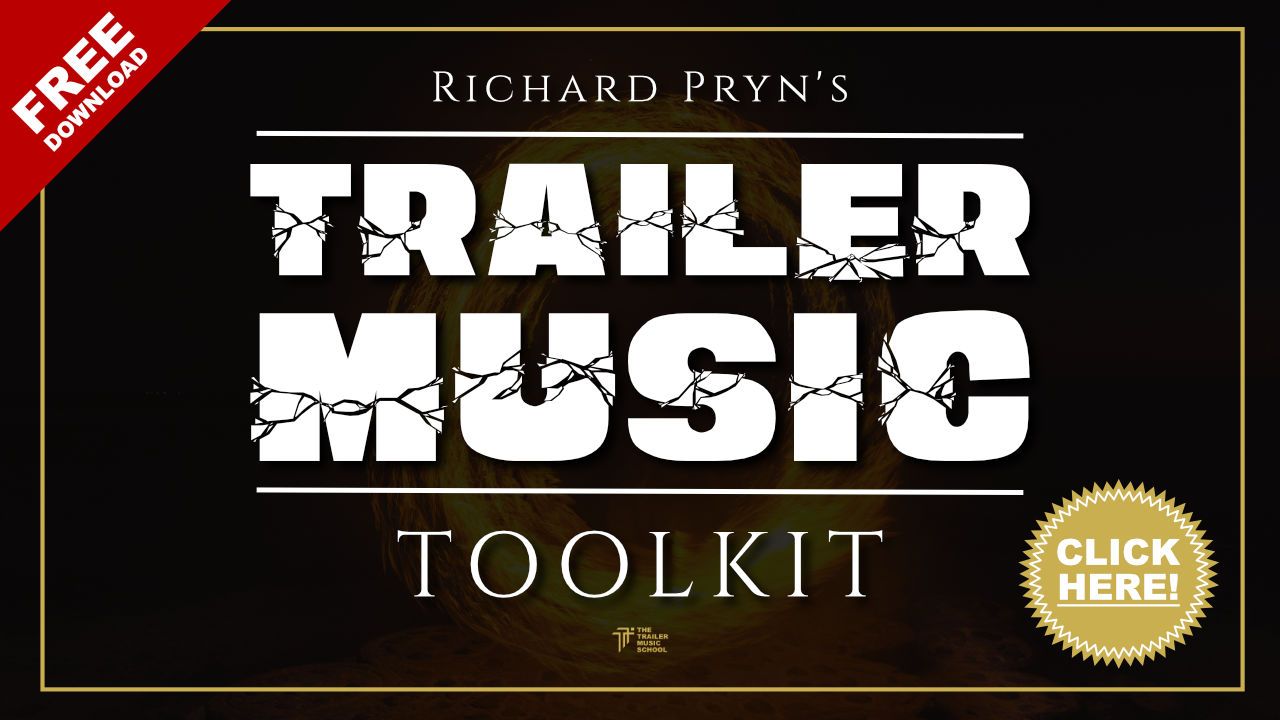In this post, I had the pleasure of asking the amazingly talented Chris Davey about how he wrote the music that was used in the Ruby Gillman trailer.
I was doing my own breakdown of how the music was used in the trailer when I reached out to Chris to see if he would be happy to answer a few questions about his writing and production process.
I'll let Chris tell you more, cue Chris Davey:
Getting Started; Structuring & Setting the Tone
The brief for the track was for an uplifting and inspiring Trailer Music Album. Generally, we were told to gear the music towards Uplifting Nature Documentaries, Disney, Nat Geo and more positive Netflix pieces.
It took two days from the initial idea until the final mix on my end, not including publisher notes. With publisher notes, it was more like 1-2 weeks.
I keep quite rigid to the trailer structure. It’s not uncommon with a cue like this, to begin with, an open, pad-like intro that feels sparse and positive.
I'll set the mood with atmospheres and hooks so the listener is drawn into the tone of the trailer, and the editor has a nice set of sounds to cut to. The mid-section is usually the part of a track I find the hardest.
I’ll give the editor one fourth or fifth act to mess with so they have options at the end of the trailer
I often find myself looking for “filler” so we have something to keep us going with the main story arc for the trailer.
After this, I’ll focus on a breakdown. I might approach this in an aggressive tone, or one that’s more sparse; It really depends on how I’m feeling and where the track feels like it wants to go.
This time I evidently went with a nice, positive and sparse tone so we have a dip in level and change in the mood before we lift off into the backend.
I find the backend pretty easy to tackle and I like to make it quite long. Then I’ll give the editor one fourth or fifth act to mess with so they have options at the end of the trailer.
Approach to Orchestration
I think I naturally gravitate towards using rousing orchestral instruments for positive uplifting tracks.
I’ll use synths to support the orchestra which is where everything gets taken up a notch. Long sordino strings are great for that classic “Disney film” type sound.
The short strings will always be needed for the motor of a trailer track. Of course, some tracks won’t need a motor, but for this one I wanted it to really get going like it’s an adventure and what better way to make that happen than using shorts?
This track is three years old and I can hear a huge amount of orchestration techniques I’d now do differently.
One of them is that the short strings aren’t cutting through enough to my ears. I’d combat this these days by layering them with multiple libraries.
Careful placement of chords and melody goes a long way.
The brass is especially important in the backend, so they are there bolstering everything else and helping to create the “wall of sound” that's needed in trailers.
The brass will play low octaves, and low mid-tenth chords, or triads. Then on top will be the theme on the french horns and trumpets playing in unison.
It’s hard to create space with so many instruments, but careful placement of chords and melody goes a long way.
Tools of the Trade

Brass
It’s a mixture of Cinebrass, Angry Brass Pro and Trailer Brass. Cinebrass Monster Lows and Twelve Horns patches have always been a staple of my template, but to bring the track home at the end I’ll layer in trumpets and synths to bolster everything.
The Twelves Horns patch really is incredible, and I often try my hardest to let it shine throughout the backend, usually coming back to an “all in” version of the theme the track has hinted at in earlier sections.
Piano
I use the Fazioli grand from “Imperfect Samples”. It just sounds so good. It’s all over trailers I’ve been fortunate enough to work on, and whenever I reach for a piano It’ll probably be this one. I also love detuning it an octave, the tone makes it sound live!
Other times I won’t hesitate to book a Concert Grand at my local University. The demand for authenticity in trailers often requires going the extra mile to deliver the best possible sound.
Strings
For this track, I used Aperture Strings for the sordinos. They are Spitfire Audio. I’ll then layer in Cinematic Studio Strings in the backend, and I use Metropolis Ark 1’s low strings. Those low strings sound crazy good, once again they sound live and if they aren’t in the backend, I feel like something is missing.
Short strings are a mixture of Fluid Shorts from Performance Samples, CSS Spiccatos and the Cello patch from Spitfire Chamber Strings but tuned up an octave. When you tune them up they become crazy tight and playable. Try it out!
Synths
Any synths you hear are Omnisphere. Lots of short synths supporting the spiccatos and long, distorted synths supporting the horns to make them cut through a bit better.
It’s also likely I’d have found various synth pads and synth strings, then thrown on a load of OTT and reverb then held down chords to try and achieve a “wall of sound” effect in the back end.
Drums & Percussion

Fabfilter Saturn is a must for bringing drums to life
Drums can be a lot of trial and error, and take years to refine in my experience.
- Cinesamples - Drums Of War 2
- Heavyocity - Gravity Impacts Customised
- Heavyocity - Ensemble Drums
- Heavyocity - Damage 2
- Audio Imperia - Cerberus
- Noise Hit from Omnisphere (Custom made for the backend)
- Spitfire Audio - Spitfire Percussion (Timpani)
- Spitfire Audio - HZ Percussion
I’ll chop and change this depending on the track's vibe, but these are often all processed with varying amounts of Fabfilter Saturn, OTT, EQ and Compression. I find that Fabfilter Saturn is a must for bringing drums to life, I use it a lot!
Creating Atmosphere
99% of the time I’ll reach for Omnisphere for pads and it immediately sets the tone. I customise my atmospheric pads for each and every track.
Sometimes one isn’t enough, so I will layer them in and allow them to evolve throughout a section to keep things interesting.

How did you create the signature sound?
I created the signature sound using a Charango (A type of guitar originating from South America). I essentially plucked an open chord on a charango into a couple of AKG C414s and then imported the audio into Omnisphere.
Then I turn on the Granular function and set it to ‘position’ with no ‘intensity’, maximum ‘smoothing’ and no ‘gliding’.
Then I added a stomp box distortion (Still within Omnisphere) to give it some subtle distortion and then added a third-party reverb (Valhalla room).
There is a 10-second decay on the reverb and an instance of Fabfilter Pro Q getting rid of a lot of unnecessary low-end.
Making Your Tracks Longer
People may disagree with my approach here, but I sometimes write really long trailer tracks. I’ve had tracks that are over 4:30.
Sometimes I just get carried away and before I know it I’ve got a long track. Or I’ll write something that's around 2:30 - 3:30 in length and then my publisher will ask me to insert a section or two, which I do as I often trust their judgement.
Other times it will be because editors always like having multiple endings to cut to, so I just put in a lot of ear candy and usable stuff so they (hopefully!) can’t resist.
Advice for Aspiring Trailer Music Composers
I’d first advise getting into trailer music as a whole and not focusing on one style exclusively. It can be great to play to your strengths but one way to push the boundaries and grow as a composer is to try out new styles.
One way to get into this style is to give it a go! Listen intently to the way others have nailed it, and try to decipher the orchestration, arrangement and production.
A good way to deep dive into this process is to try and find the stems of the song online, then listen to the individual layers. See how the composer has arranged the instruments and what each grouped layer is doing.
This track only has about 90 tracks, these days my templates are a lot bigger at anywhere from 120 - 200 tracks.
Thanks, Chris
I think you'll agree that Chris gives away some absolute gems in this interview and we are all lucky that he shared so much with us.
Watch my breakdown of how Chris' track was used in the Ruby Gillman trailer.






